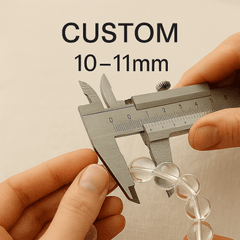Raw Crystals: What They Are, How They Form, and Their Uses
Introduction
Raw crystals are natural mineral specimens that remain in their uncut and unpolished state. They showcase the shapes, colors, and textures formed deep within the earth, often revealing inclusions and natural edges. Collectors, jewelers, and designers value raw crystals for their authenticity and unique appearance.
How Raw Crystals Form
Raw crystals originate from geological processes that can take thousands to millions of years.
-
Cooling Magma – As molten rock cools, minerals crystallize into structured formations such as quartz.
-
Hydrothermal Veins – Mineral-rich fluids deposit crystals in cracks and cavities within rocks.
-
Metamorphic Changes – Heat and pressure alter existing rocks, creating new crystalline structures.
-
Sedimentary Processes – Minerals precipitate out of water, forming crystals like calcite.
Characteristics of Raw Crystals
-
Natural Shapes – Crystals may appear as points, clusters, or rough blocks.
-
Visible Inclusions – Internal lines, fractures, or mineral threads make each specimen distinct.
-
Varied Colors – From clear quartz to purple amethyst, golden citrine, or green fluorite.
-
Authenticity – Easier to distinguish from synthetic or heavily processed stones.
Practical Uses of Raw Crystals
-
Collecting & Education – Mineral collectors and geology students often seek raw crystals for study and display.
-
Jewelry & Design – Many designers use raw quartz, amethyst, or tourmaline in rings, pendants, and earrings for a natural aesthetic.
-
Interior Décor – Large raw crystals, clusters, or geodes are popular as decorative pieces.
-
Industrial Applications – Quartz crystals are essential in electronics, optics, and watches due to their piezoelectric properties.
Conclusion
Raw crystals combine natural history with practical value. Their diverse formations, textures, and applications make them appealing to both collectors and industries. Whether used in jewelry, education, or technology, raw crystals remain one of nature’s most fascinating creations.













Leave a comment